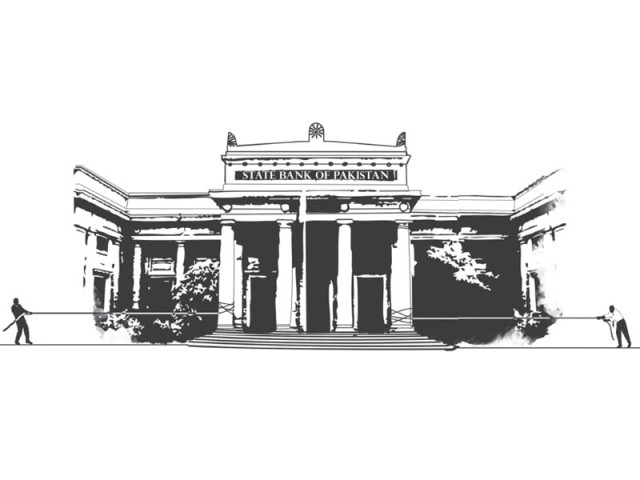Explaining the rate cut: A case of contrasting styles
The acting governor of the State Bank appears less willing to be confrontational with the finance ministry.

Central bankers do not often have much in common with evangelical preachers, but Shahid Hafeez Kardar came about as close as a chartered accountant can to a man on the pulpit. His successor, the Wharton-educated acting State Bank Governor Yaseen Anwar, on the other hand, is far more reserved.
The contrast between the two men’s styles, explains, to a large extent, the decision by the SBP to cut interest rates by 2% since Kardar’s departure in mid-July of this year.
Sources inside the central bank say that the SBP’s internal analysis, conducted over the past couple of months, was conflicted on the idea of a rate cut, with some analysts supporting it and others – notably the monetary policy division – opposed. The decision of whether or not to do so, however, was determined in large part over how the move would be perceived by the public as a reflection on the State Bank’s independence.
Kardar was the macroeconomic equivalent of a firebrand, preaching the gospel of fiscal sanity to what he thought of as a finance ministry that seemed utterly disinterested in putting its house in order in terms of restricting its expenses and raising its revenues. His monetary policy announcements – both those made in press conferences as well as through press releases – were scathing in their criticism of the government’s inability to bring the budget deficit under control.
He, and his predecessor Salim Raza, had been trying to force the finance ministry to come to its senses by keeping interest rates high, in the hope that the high cost of servicing its debt would force the government to begin serious fiscal reforms, such as raising revenue by eliminating tax exemptions and cutting down on government expenditure.
Kardar’s resignation in mid-July of this year – and the almost immediate 0.5% cut in the discount rate – had left many under the impression that the government wanted to lower interest rates and had forced the central bank governor out in order to make that happen.
That impression of weakness, coming after almost three years of the SBP holding strong against the finance ministry, left many inside the central bank wary of reducing rates drastically, even though the bank’s analysis suggested that a rate cut could be justified.
It seems, however, that Yaseen Anwar, one of Kardar’s former deputies who is currently acting as the SBP governor, is unwilling to go with the same confrontational style. Sources inside the State Bank say that Anwar is somewhat more reclusive, a diplomatic figure who does not arouse controversy.
While the decision on whether or not to cut interest rates is largely made by the monetary policy committee, the degree to which the SBP governor is willing to stand up to the government appears to play a major role in determining the direction in which the committee will vote. There is, however, no evidence to suggest that there was explicit pressure from Islamabad to cut interest rates, although there has been much speculation that this was the case.
Insiders at the State Bank, however, point to another factor: differing diagnoses of why inflation is occurring in the first place.
It appears that there are two different views within the top level hierarchy of the State Bank as to why inflation is happening: demand-pull versus supply-push inflation.
In the former case, aggregate demand for goods and services in the economy exceeds aggregate supply, causing prices to rise. In such circumstances, high interest rates can temper aggregate demand, which in turn means that the central bank can control inflation through interest rates.
If, however, prices are rising simply due to rising costs, then keeping interest rates high only adds to their cost and does nothing to curb inflation.
Published in The Express Tribune, October 10th, 2011.



















COMMENTS
Comments are moderated and generally will be posted if they are on-topic and not abusive.
For more information, please see our Comments FAQ